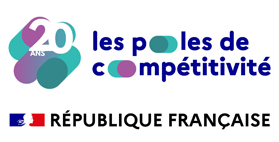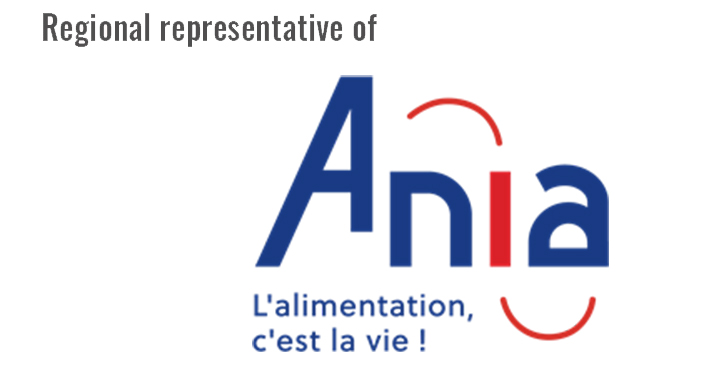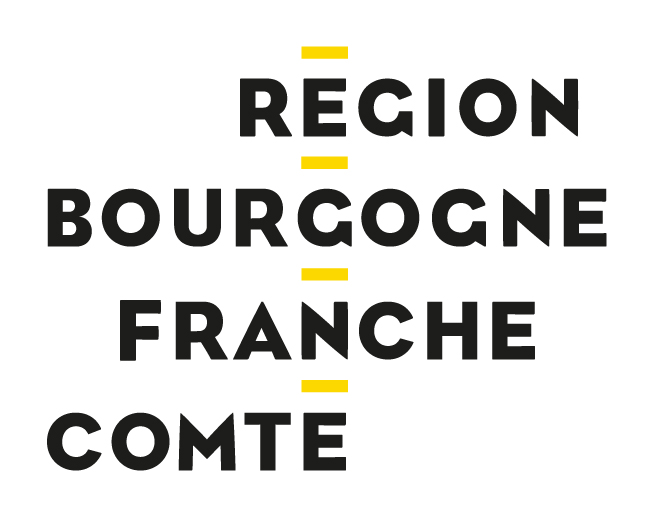08 June 2020 / The experts of the Vitagora ecosystem / Vitagora publication / Science and technologies
Using experimental economics to assess customers’ willingness to pay
This article is also available in French:

Would your product sell better with an organic label? Will the cost of new packaging be absorbed in the sales price? Is it possible to test your assumptions before changing a parameter of your product, such as ingredients or a recipe? Consumer surveys are an effective way to obtain declarative information. But it is also scientifically possible to assess consumers’ willingness to pay using experimental economics.
Why this should interest you
- Assessing consumers’ willingness to pay is complex. Consumer surveys only provide declarative data that does not require a commitment from respondents.
- Experimental economics is a scientific method that provides alternatives to traditional methods for consumer research.
- Experimental economics confronts a product and its characteristics (sensory or physical properties, production processes, origin, etc.) with market reality.
- Conducted in a laboratory, it is a reliable and robust method for optimising the value of data..
Would your wine sell better if it had an organic label? How much are your consumers willing to pay for your range of biscuits if you only use local wheat produced with agroecological methods? Would the use of returnable glass bottles instead of disposable plastic give you a competitive edge?
Estimating consumer behaviour in an economic context - particularly their willingness to pay - is complex and covers many parameters. By testing assumptions in lab conditions, experimental economics aims to provide scientific answers about how individuals behave in a particular economic situation.
Introduced in the 1960s, experimental economics boomed throughout the 1980s, and continues to develop today. New attention was given to the discipline when the Nobel Prize in Economic Sciences was awarded to Vernon Smith and Daniel Kahneman “for making laboratory experiments an instrument of empirical economic analysis, particularly for studying market structures.” Jean-Christian Tisserand, professor in the Wine & Spirits department of the Burgundy School of Business (BSB) in Dijon presents the emergence, functioning and benefits of experimental economics, in application to the food sector, amongst others.
Jean-Christian Tisserand
Jean-Christian Tisserand is a professor in the Wine & Spirits department of the Burgundy School of Business (BSB) in Dijon. A specialist in the economic analysis of negotiation, he presented his thesis in economic science: "Essais sur l’analyse économique de la négociation" in November 2016 at the Université de Franche-Comté. His research fields include microeconomics applied to negotiation and dispute resolution, experimental economics, and the economics of wine and spirits. He joined BSB’s School of Wine and Spirits Business in 2017, where he applies his economic expertise to the wine industry. On-line CV.
School of Wine and Spirits Business - BSB
The School of Wine & Spirits Business was established in 2013 at the BSB business school in Dijon. It is the world’s leading institution for education and research about wine and spirits management and unites researchers specialised in both economics and the wine sector. Apart from its contribution to academic and applied research, the School of Wine and Spirits Business offers students a professional programme combining theory, practical cases and contact with the sector. The department is headed by Jérôme Gallo.
Willingness to pay: test your innovation against market reality
Any food innovation - be it farming methods, ingredients, processes, recipes, or packaging - is ultimately confronted with market reality. Market reality depends on two criteria: customers’ acceptance of the innovation, and product value - in other words, customers’ willingness to pay.
Sensory evaluation is fundamental to food innovation and contributes to acceptance, but it does not place consumers in a purchasing situation. How can you anticipate a consumer’s choice faced with a range of similar products? Why would they choose your product rather than another? And how much are they willing to pay?
Three main methods exist for answering these questions:
- Consumer surveys
- In situ observation
- Experimental economics
Limitations of consumer surveys: declarative data bias
Results of consumer surveys are of limited value, because they are based on statements of intent and not evidence. Respondents have multiple biases: How honest are they? How long do they have for the survey? Are they aware of their preferences? If so, what impact does this awareness have on their responses? What do they know about the subject? The list goes on...
Limitations are observed regularly. General observations suggest that most consumers would be willing to pay more for an ethical product or better quality. For example, for a product made in France, a local product, or for meat with guaranteed quality. But for 76% of people, price is still the first criteria for purchase (Source: Baromètre Opinion Way pour Sofinscope – 2016), with priority over taste at 40% and expiry dates at 39%. Is it possible to differentiate between intention/motivation and the act of purchasing?
In situ observation: an expensive and difficult method
To conduct in-situ observation, which allows for a reality check in the field, the product must be already available in the market. Application is also labour intensive and expensive with eye-tracking, observers/researchers on-site, travel costs, etc. Finally, the method is useful but it is empirical with results that are often heterogeneous, lengthy and complex to process.

Experimental economics: a reliable scientific method
Demonstrating behaviour using scientific protocols
Experimental economics positions itself as an alternative method. "It is a very powerful tool that dissects every dimension of individual preference," explains Jean-Christian Tisserand.
“It’s like a game or an experiment. We choose several groups of volunteers at random and study their behaviour, risk aversion, willingness to pay, and so on," he continues. Experimental economics differs from consumer surveys and in-situ observation with:
- a controlled environment (laboratory),
- where consumer bias is minimised (lack of contextualisation),
- with stringent protocols including instructions, incentives and rules making it possible to process and analyse results.
Experimental economics marks a shift in economics from empirical and statistical analysis to laboratory science (see paragraph below “Experimental economics: a science”).
Jean-Christian Tisserand confirms the relevance of the experimental approach: “Experimental economics, unlike consumer surveys that are based on individual statements, is based on actual behaviour. Many studies in experimental economics have also shown that declarative and demonstrated results are very different.”
A transparent and engaging approach
Transparency is key to the success of experimental economics. "To ensure transparency, participants are completely informed of the protocol. Lying to them is not permitted," explains Jean-Christian Tisserand. As a result, participants have complete trust in instructions they receive, avoiding mistrust and non-spontaneous behaviour.”
Participant engagement is also key. This is generated two ways:
- real financial gain announced in the game rules (auctions, etc.);
- optimised concentration thanks to laboratory conditions.
"Participants don’t have access to their phones and can’t communicate with each other. This prevents them from influencing each other and limits data contamination. As a result, we obtain independent observations," explains Jean-Christian Tisserand.
Example: Organic wine
"Wine producers have high expectations of organic labels, such as the AB label in France," says Jean-Christian Tisserand. “On one hand, they observe the growing trend amongst consumers. On the other hand, they fear regulatory changes and increasingly stringent constraints on their production methods.”
"That’s why we decided to conduct an experiment into the willingness of consumers to pay for wine produced with organic farming practices”.
The experiment is conducted at the BSB (Dijon) in a room with twenty computers, screens and a trolley filled with bottles for presentation to participants. Jean-Christian Tisserand was unable to reveal the protocol used because the experiment was still underway at the time of the interview. He was able to tell us that a panel of over 200 consumers, including beginners and trained tasters, are asked how much they would be willing to pay for a bottle by simply reading the label, without tasting the wine.
"We estimated that we needed between 100 and 200 participants for results to be reliable. It’s also important that panels mix novices with more experienced consumers. Of course, results will be refined to reflect consumer knowledge, but it’s always very interesting to analyse expert feedback as it is," he explains.
Experimental economics: the science
Challenging the theory of “profit maximisation”
From the end of the 19th century until the 1980s, economic analysis of consumer behaviour was mainly based on a theoretical vision. The only - and largely predominant - scientific theory was neoclassical economics. It is based on the belief that the rational of homo economicus is geared toward profit maximisation: an unwavering search for the minimum price for maximum consumption.
In the 1980s and 1990s, two very simple “games” were instrumental in demonstrating the limits of this theory: the ultimatum game and the dictator’s game.
"The Ultimatum Game" (1982)*
Player A has amount X of money to distribute between himself and Player B. Player B can accept or refuse the offer. If Player B refuses, the money is destroyed and neither player receives any.
According to neoclassical theory, Player A should offer Player B the smallest amount (over €0), and Player B should accept it. To the contrary, results have shown that many factors enter players' decision-making including jealousy, envy, justice, risk appetite/aversion and reciprocity. Apparently non-monetary aspects guide people’s decisions.
*Güth, W., Schmittberger, R., & Schwarze, B. (1982). An experimental analysis of ultimatum bargaining. Journal of economic behaviour & organization,3(4), 367-388.
"The Dictator's Game" (1994)*
Player A has X amount of money to distribute between himself and Player B. Player B has no veto or bargaining power.
According to the neoclassical theory of profit maximisation, player A is expected to keep the whole amount. But on the contrary, results challenge this hypothesis: 50% of Players A keep the whole amount, 25% divide it equally, and 25% keep less than half for themselves.
The game clearly shows that factors other than profit maximisation, such as altruism or empathy, affect an individual’s willingness to pay. Several repetitions of the experiment were conducted with structural modifications: if Player A sees Player B or not before making a decision or if Player A earnt or was given amount X, etc. Results identified other decision-making biases such as pride, gender, physical characteristics, mood and personality traits.
*Forsythe, R., Horowitz, J. L., Savin, N. E., and Sefton, M. (1994). Fairness in simple bargaining experiments. Games and Economic behavior,6(3), 347-369.
Keywords
Consumers, behaviour, willingness to pay, marketing, market
|
Find out more...To find out more about the expertise of BSB, or to be connected with the experts in the Vitagora network, contact Elodie Da Silva, Innovation & Ecosystem team leader with Vitagora: elodie.dasilva@vitagora.com.
A food engineer from the French city of Toulouse, Elodie devotes her considerable energies to leading Vitagora's team of food innovation professionals in supporting members' innovation activities. |
Further reading
- Lambert, E.A, Tisserand, J.C. (2018). Négociation contrainte et comportement de négociation, une analyse expérimentale, Revue Française d’Économie, Vol. 32, p.46-89
- Tisserand, J.C. (2018). Do they act rationally? The ultimatum game, a meta-analysis of three decades of experimental research, The Empirical Economics Letters, Vol. 15, n°12, p.1235-1241
- Tisserand, J.C. (2016). Le jeu de l’ultimatum, état de l’art et méta-analyse de 30 années de recherches expérimentales, Actualité économique, Vol. 92, n° 1-2, p. 289-314.




 Home
Home



















